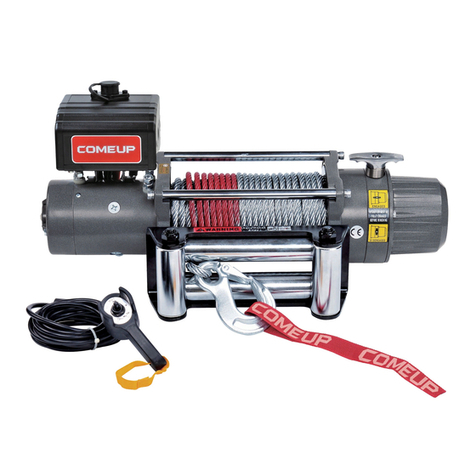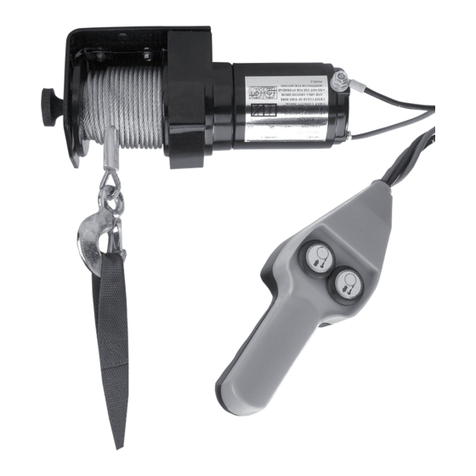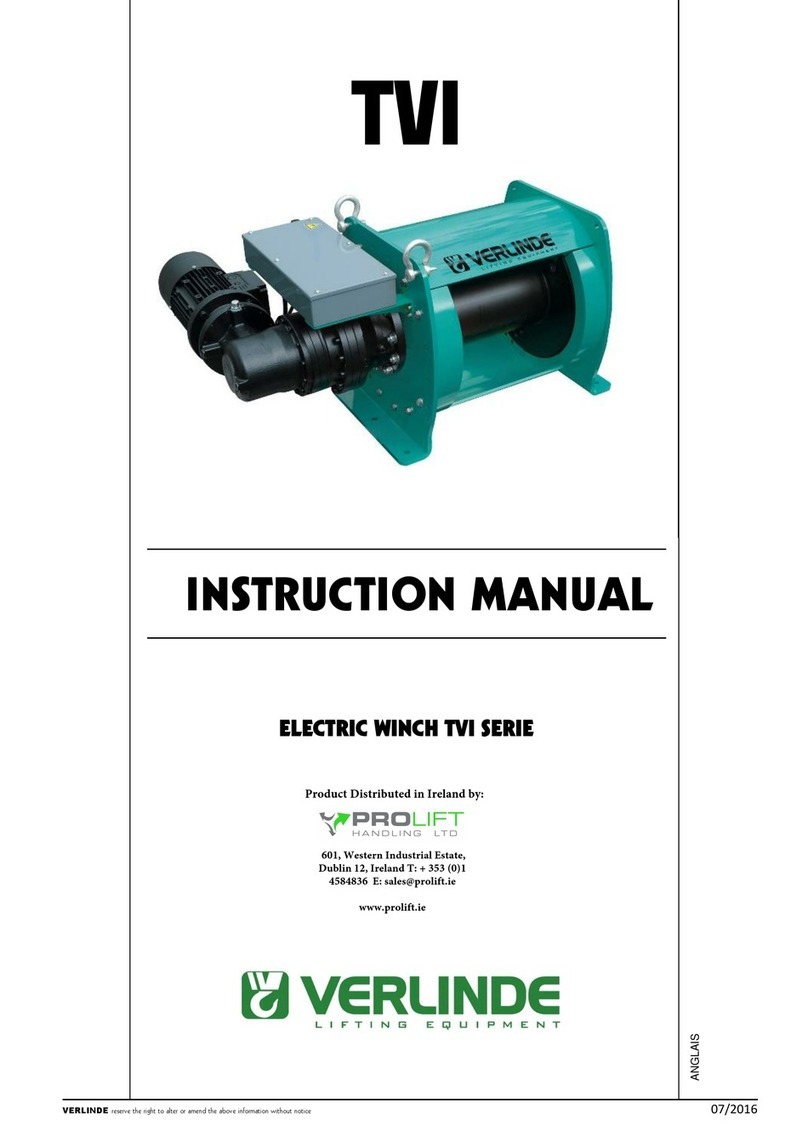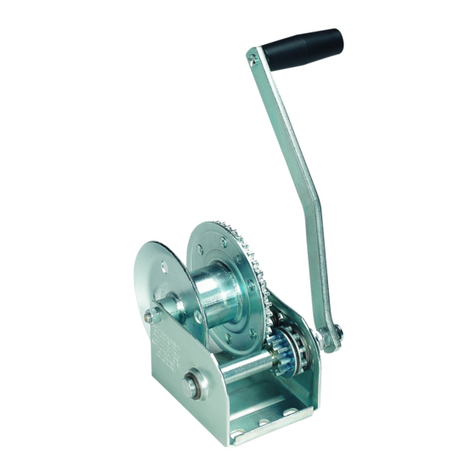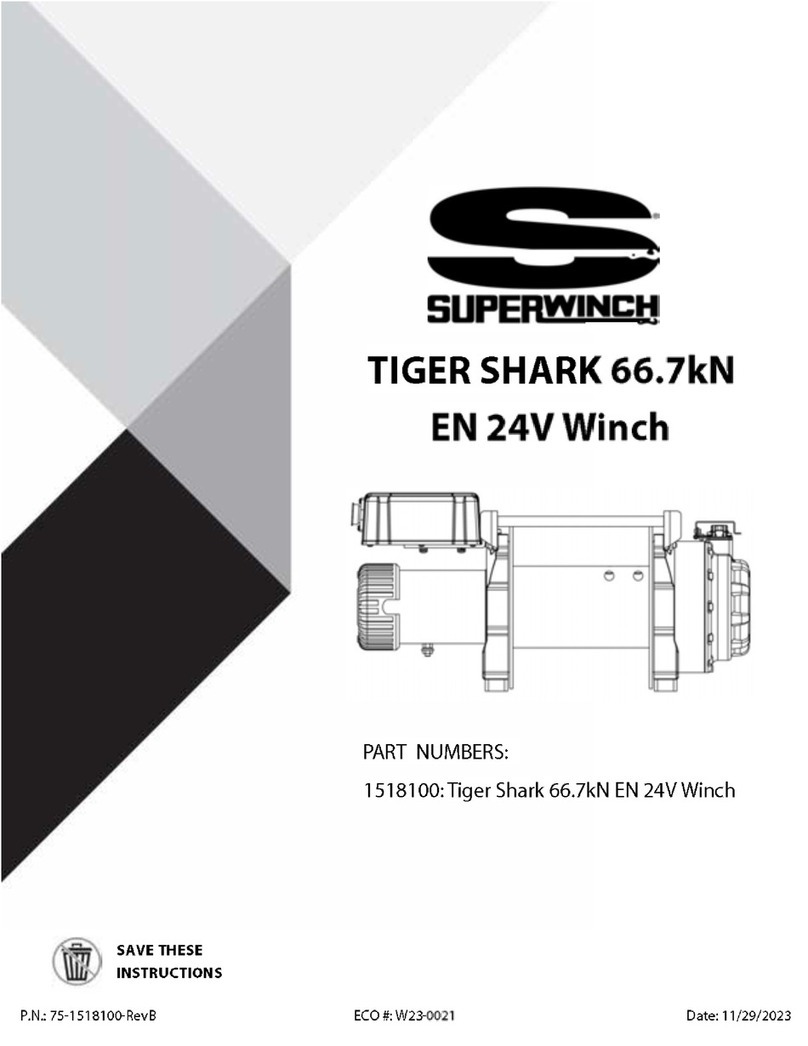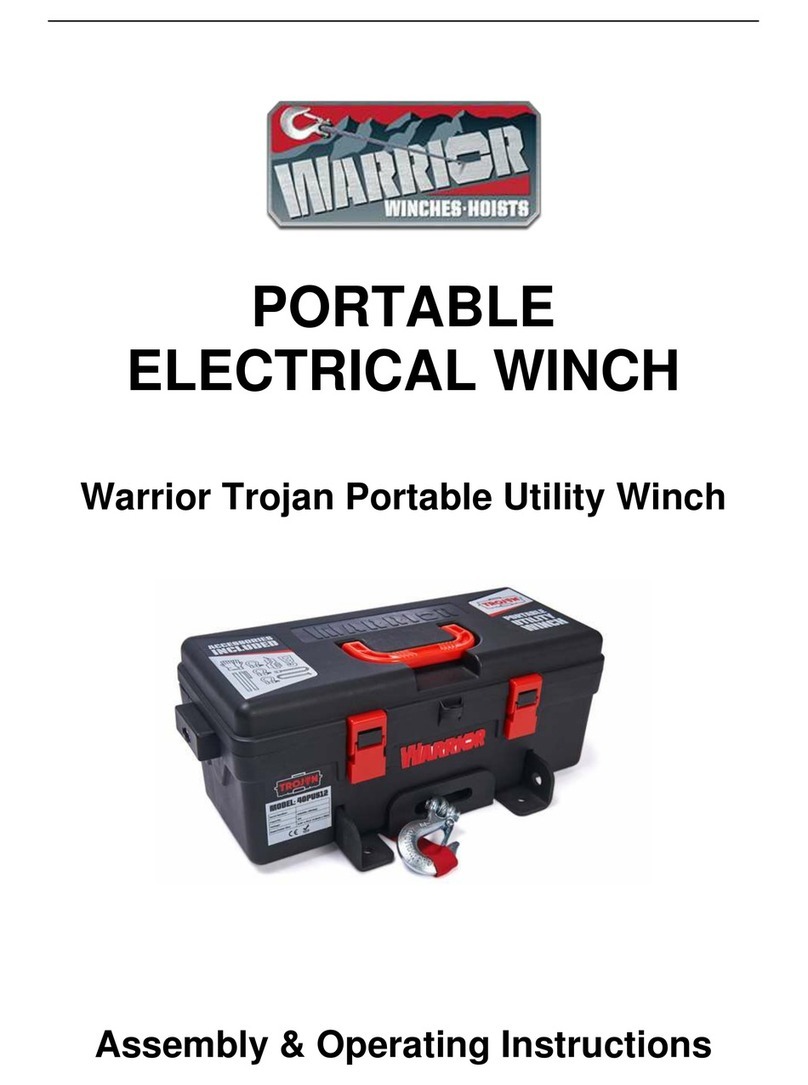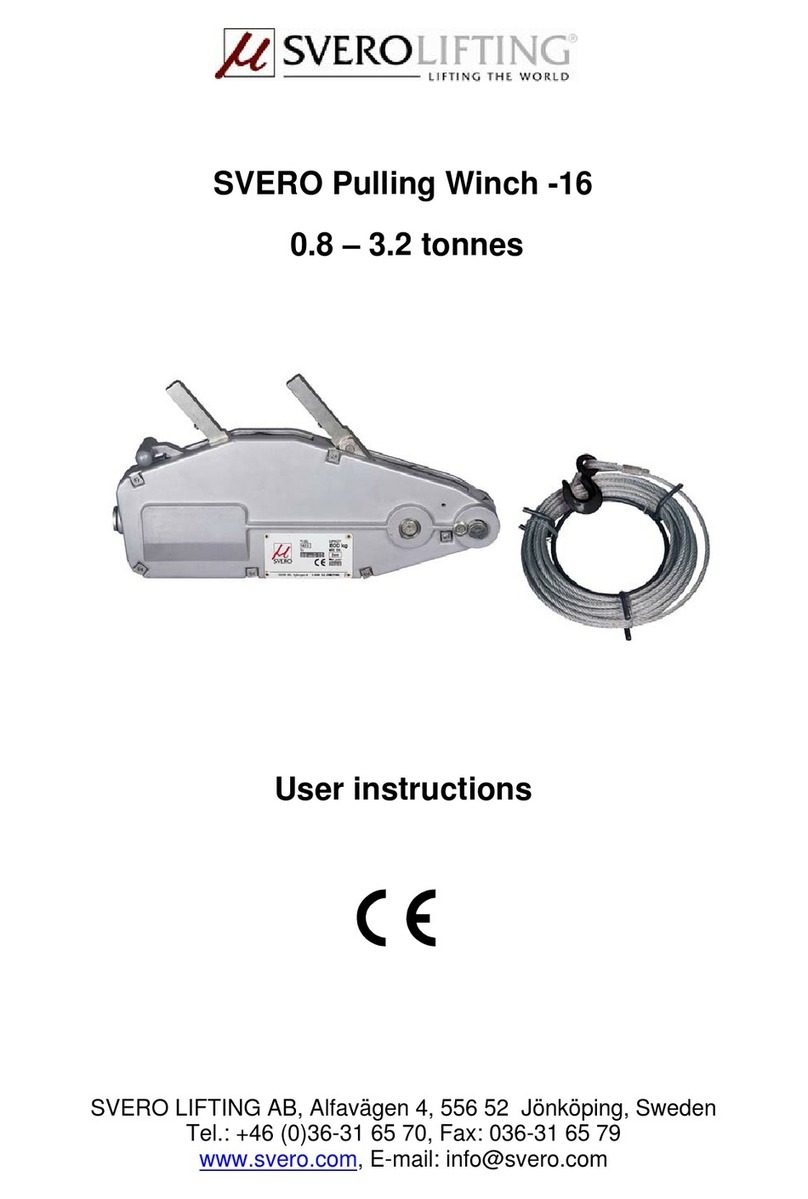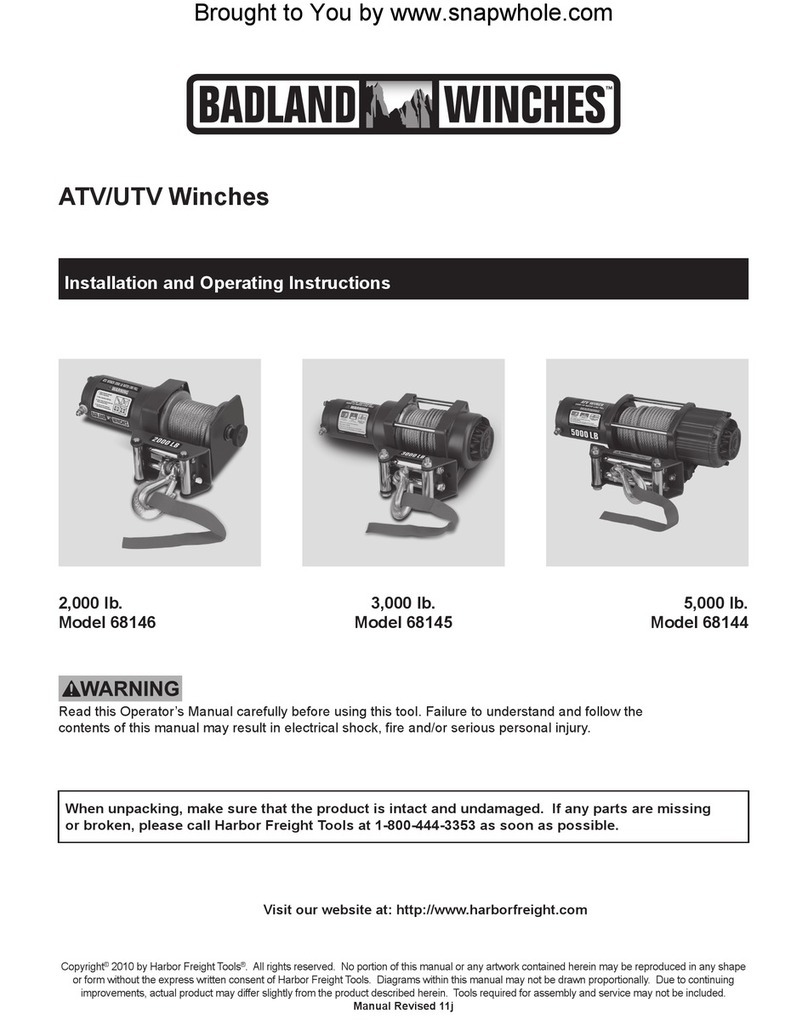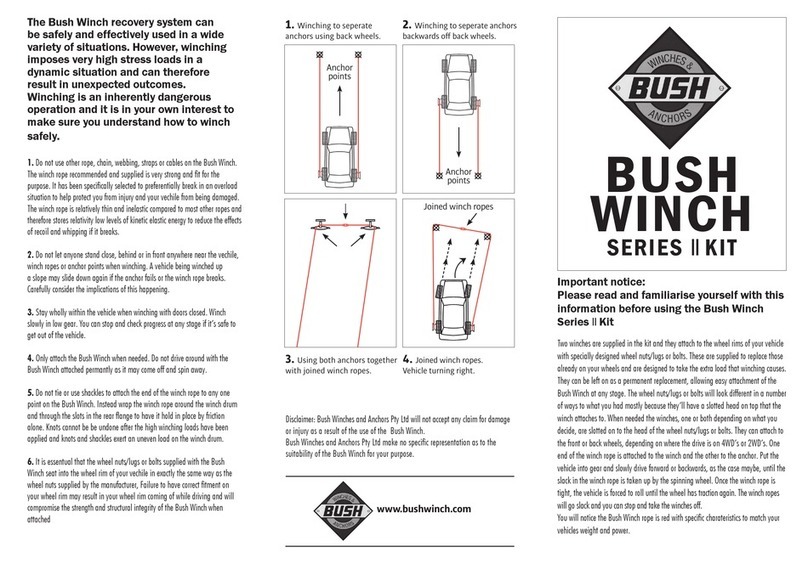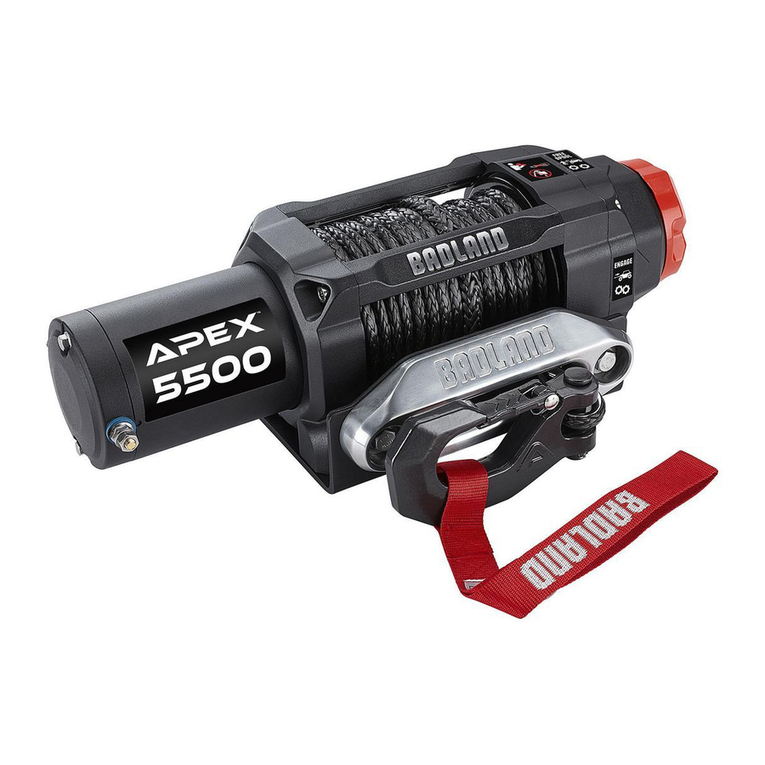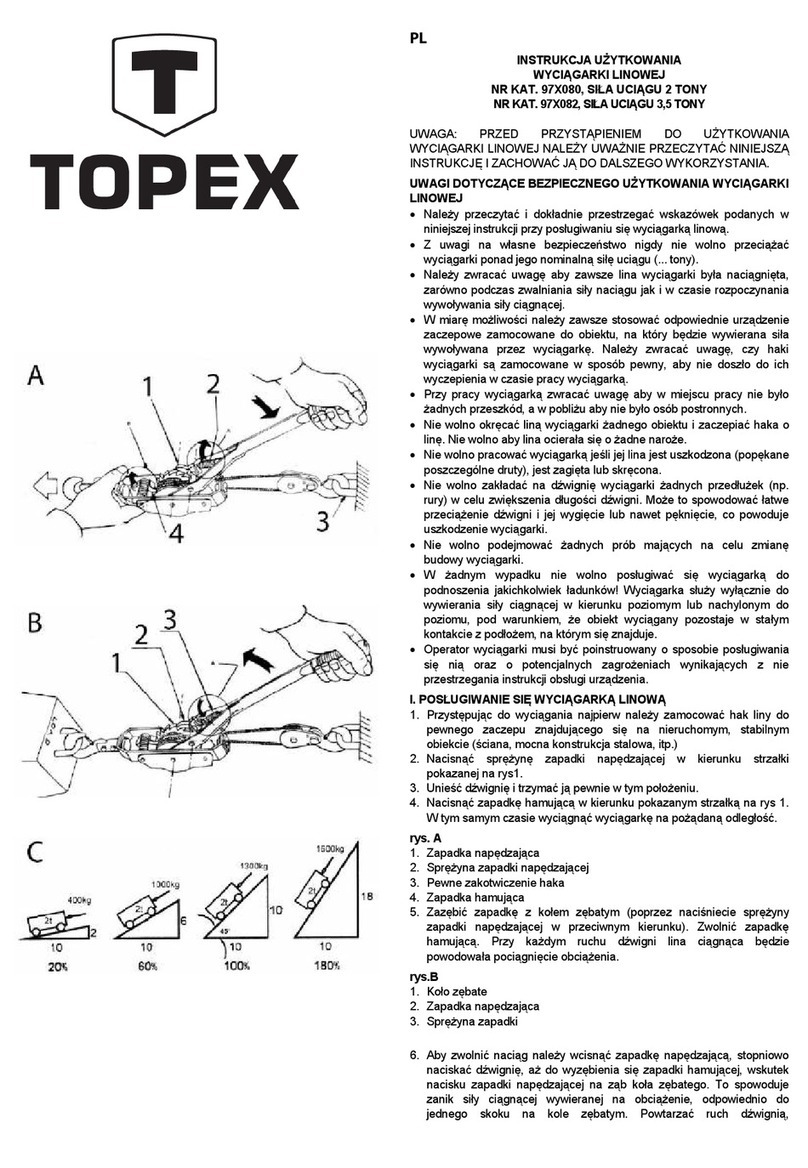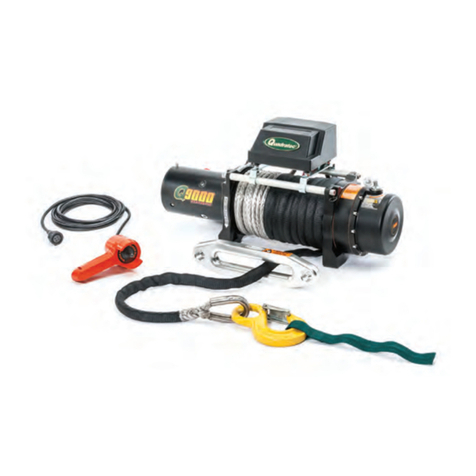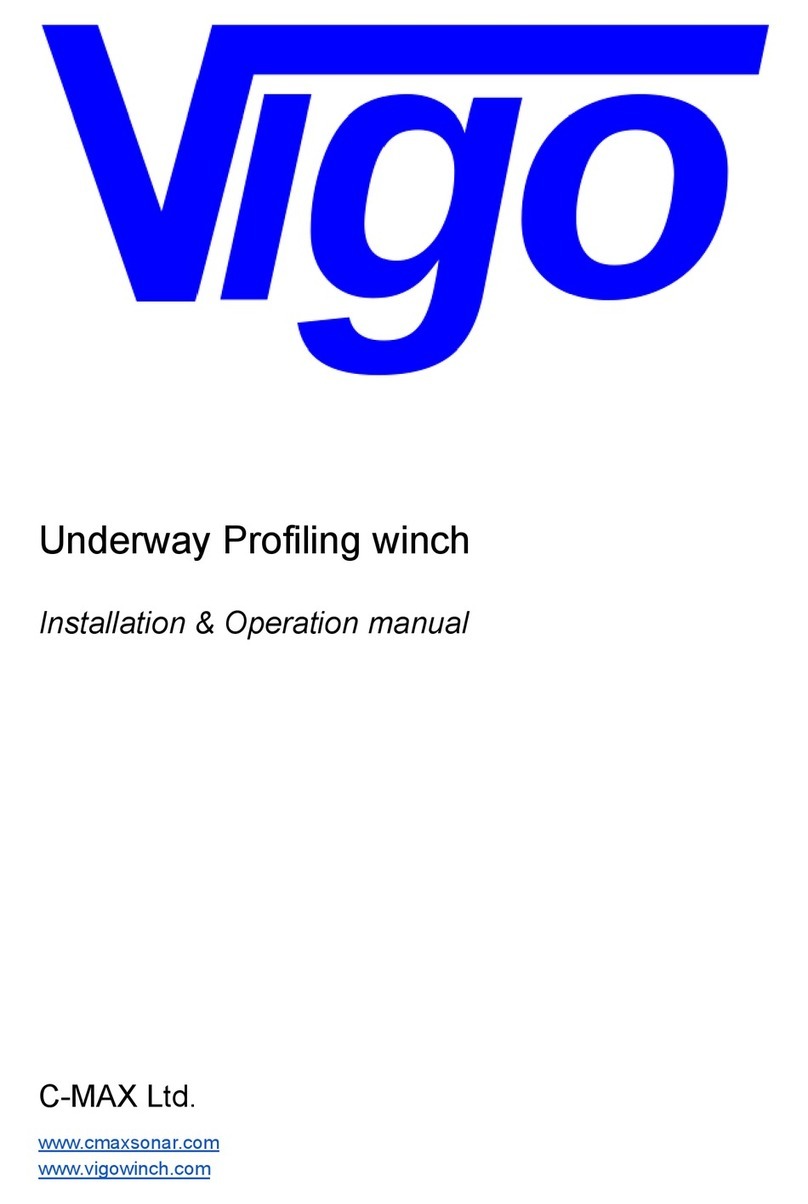1 - Conditions of use
All users must read the set-up instructions carefully before using the product for the first time. These
instructions should enable the user to familiarise themselves with the winch and use it to its full
capacity. The set-up instructions contain important information about how to use the winch safely and
correctly. Compliance with these instructions helps to avoid danger, reduce repair costs, reduce
stoppage time and improve the reliability and service life of the winch. The instruction manual must
always be available in the place where the winch is being used. In addition to the set-up instructions
and regulations concerning the prevention of accidents, the work safety and professional regulations
in force in each country must also be respected.
This equipment is governed by European regulations and more specifically Directive 2006/42/EC on
machinery, EMC Directive 2004/108/EC and LVD 2006/95/EC, as well as the EN 14492/1 standard.
These winches are designed to move loads using a suitable steel rope. They have been designed to
perform lifting and pulling operations within the defined load capacity limit and with safety factor 5
(static against sudden failure).
For use in lifting, the European regulation makes certain equipment obligatory, such as a limit
switch system and, for loads of 1,000 kg or more, a load limiter.
The operator must check the presence of this equipment (available as an option from the
manufacturer) before using the product for lifting purposes.
The capacity indicated on the winch corresponds to the maximum capacity of use (MCU); in no
event should this capacity be exceeded.
THIS WINCH CAN UNDER NO CIRCUMSTANCES BE USED TO LIFT PEOPLE.
Do not begin moving the load until you have attached it correctly and checked that all personnel
are outside the danger zone.
Before use, the operator must always check that the machine, rope, hook, markings and moorings
are in good working order.
The operator must check that the load is attached in such a way that the winch, the rope and the
load place neither the operator nor any other person is in danger.
The winches can be used at ambient temperatures ranging from -10°C to +50°C. Please consult
the manufacturer in the event of extreme conditions of use.
Important: In the event of an ambient temperature below 0°C, the brake must be tested to ensure that
there are no operating faults resulting from the freezing conditions.
The data concerning the heat-resistance of the steel rope and its fastenings must be available on
request from the manufacturer and must be respected.
VERLINDE cannot accept any liability for the consequences resulting from the use or installation of
equipment not provided for in the present instructions or for the consequences of removal,
modification or replacement of original parts or components with parts or components from other
sources without the written agreement of VERLINDE.
The use of winches requires strict compliance with the accident prevention and safety measures in
force in the country where they are used.
YOU MUST ALSO RESPECT THE REGULATIONS APPLICABLE IN YOUR COUNTRY.
